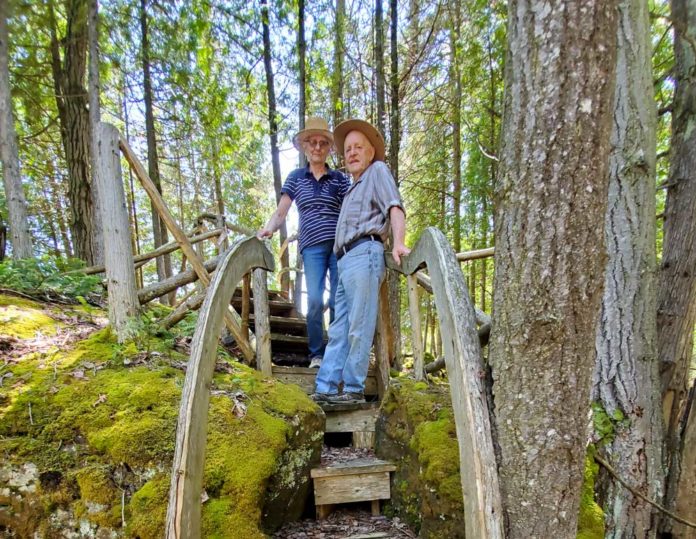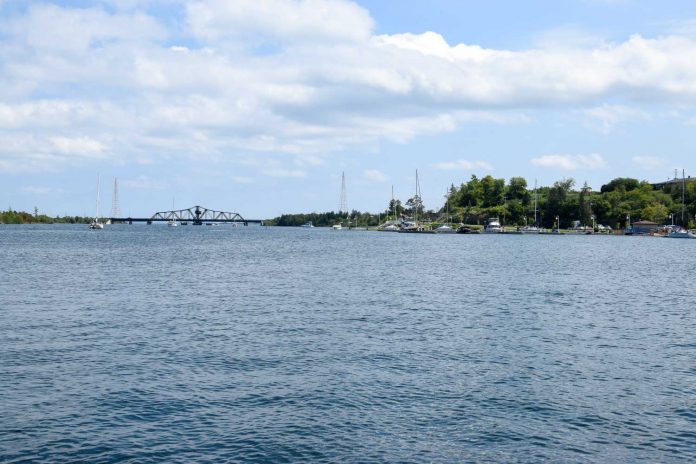Indigenous-focused policing has 50-year history in Canada
EDITOR’S NOTE: Amidst growing discussions of systemic racism in governance models and policing more specifically, The Manitoulin Expositor will be speaking with First Nation police leadership who have connections to the Island’s two First Nation police services, as well as experts who can help explore the ongoing gaps between Indigenous and non-Indigenous police forces.
ONTARIO – Police services in Indigenous communities in Canada have a long and challenging past. The Royal Canadian Mounted Police (RCMP) traditionally policed First Nations but by the end of the Indian Agent model in 1971, RCMP had gradually withdrawn from policing First Nations in Ontario and Quebec.
Around the same time, the Department of Indian Affairs and Northern Development began to roll out a ‘band constable’ program. This allowed First Nations to have more say in what work their local constable carried out, though they still required approval from police forces.
Ontario launched its Ontario Indian Special Constable Program, similar to the Indian Affairs program, spurred by a report from a 1972 task force on policing. Officers in this program were part of the Ontario Provincial Police (OPP) but got appointed to work in various communities at the request of band councils.
Several reviews of Indigenous policing followed in later years, including an RCMP review of its band constable program in the 1970s and a federal review of Indigenous policing that ran from 1983 to 1990.
Major changes began in 1989 when the Ontario First Nations Policing Agreement (FNPA) fully authorized First Nation officers within Indigenous communities, with OPP providing additional resources.
Many observers had begun to note the challenges facing Indigenous police services and these concerns became more prominent after another series of reports and inquiries across Canada in the early ‘90s.
“The reports were unanimous in decrying the effectiveness of the policing of (Indigenous) people in terms of sensitivity to cultural considerations, lack of community input, biased investigations, minimal crime prevention programming and fostering alienation from the justice system by Native people,” read a report on the history of Indigenous policing in Canada by Don Clairmont in September of 2006.
That report was part of the Ipperwash Inquiry, a review of the standoff between police forces and Indigenous land defenders from Kettle and Stoney Point First Nation at Ipperwash Provincial Park, near Grand Bend.
September 6 marks 25 years since the fatal shooting of land defender Dudley George at Ipperwash in 1995.
The FNPA in Ontario evolved in 1991 when it enabled more options for Indigenous police services, including the ability to self-administrate services. The number of officers in the OPP-run Ontario Indian Special Constable Program doubled and there were 74 First Nations participating in the program.
The year 1992 marked the start of the First Nations Policing Program (FNPP), a national program designed to address some of the previously reported shortcomings. This is the model that still exists to the present day and involves a blend of provincial and federal funding.
This would theoretically provide the autonomy for which many Indigenous leaders have called, but the reality has not met the claim. An indicator is in its name—these initiatives are ‘programs,’ rather than essential policing services.
As such, they do not receive the same level of funding as conventional police forces. This emerges in staffing levels, the state of physical infrastructure such as detachments and the levels of service these forces are able to provide to their communities.
“For decades, self-administered First Nations policing in the province of Ontario has been chronically underfunded. First Nations officers have been forced to work in conditions which other officers throughout the province would never be subjected to,” said Terry McCaffrey, police chief of Wikwemikong Tribal Police Service (WTPS) and the president of Indigenous Police Chiefs of Ontario (IPCO).
He shared this view at a July meeting of the federal standing committee on systemic racism in policing.
When Wes Luloff, then chief of Nishnawbe-Aski Police Service, became the president of First Nations Chiefs of Police Association in 2002, he said First Nation police programs were far behind national and provincial police forces.
The lack of adequate funding left the forces “set up to fail,” he said in a Windspeaker story about his appointment to the president role.
FNPP forces receive a pot of money from which to cover all expenses. That amount typically funds a small team of generalized officers, meaning these police services still rely on larger forces, such as OPP, for specialized assistance.
However, Indigenous communities often rank higher on crime severity indexes and each community has unique challenges that might be best addressed with a small, dedicated unit of officers focusing on that issue. These concerns cannot be adequately addressed under the current model.
A 2017 analysis by University of Regina scholars noted that each FNPP agreement is negotiated individually, meaning quality of service can vary widely between communities.
The analysis cited a study that suggested early entrants to the FNPP fared best; none of the 16 communities that had applied for FNPP agreements between 2006 and 2014 was approved, owing to a lack of resources.
One-third of FNPP services have disbanded since their inception, with an average lifespan of 9.2 years.
The University of Regina study aimed to assess whether or not FNPP forces were indeed ‘set up to fail.’ The authors disagreed with that statement, stating that they could not prove that the program’s creators would have foreseen all of the challenges.
Instead, they describe the landscape of Indigenous policing in Canada as one of “benign neglect,” that governments have chronically failed to address the barriers to effective services.
“This status of benign neglect is in keeping with a long history of promising much but delivering little to Indigenous peoples,” the authors wrote.
Conditions have improved within FNPP forces somewhat in recent years. Officers have arrived at pay parity with non-Indigenous police forces, as one example, but much progress remains. Some of the key points for which Indigenous Police Chiefs of Ontario is advocating include the declaration of these forces as essential services, proper staffing, recognition as the experts in policing Indigenous communities and full autonomy to determine their paths forward.
“I’m always optimistic that when like-minded and good-hearted people come together, that we will do good things. It’s just a matter of ensuring that the conviction in our actions carries forward,” said Mr. McCaffrey.





